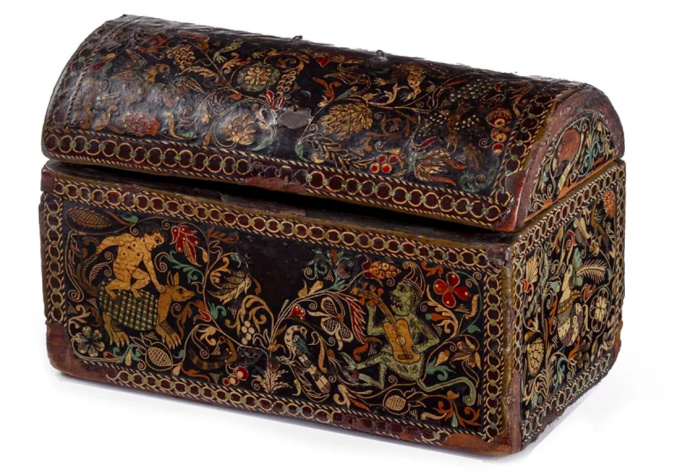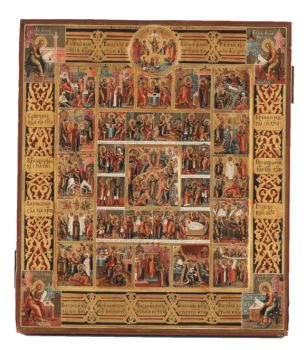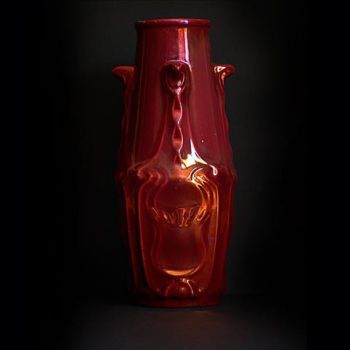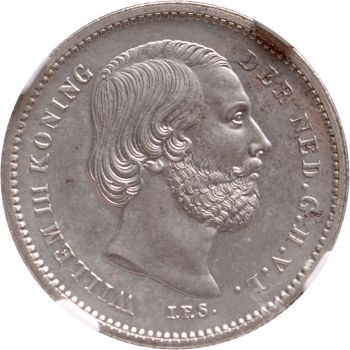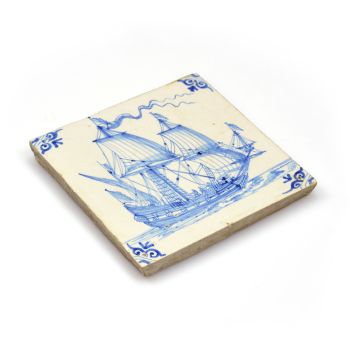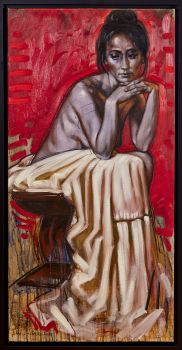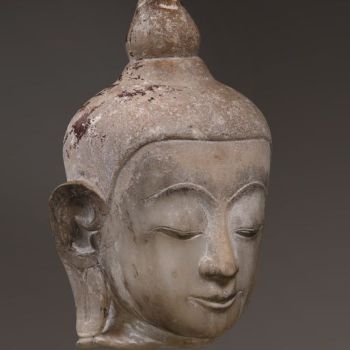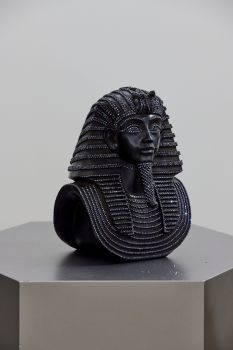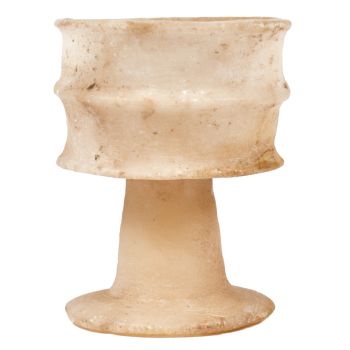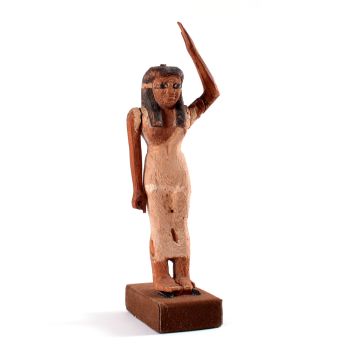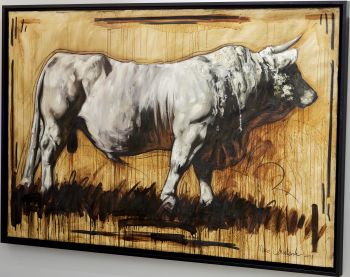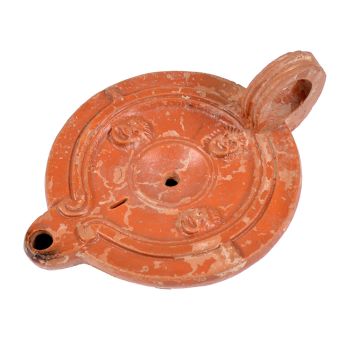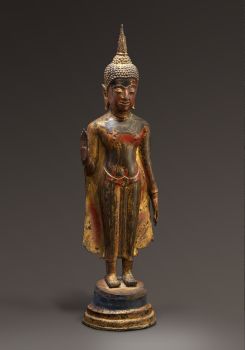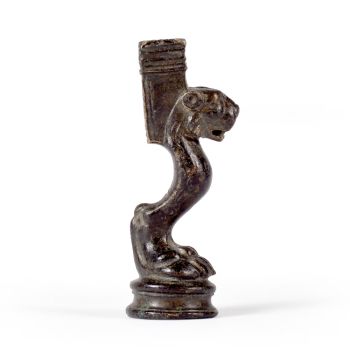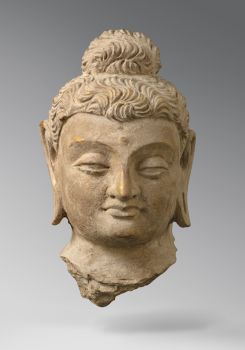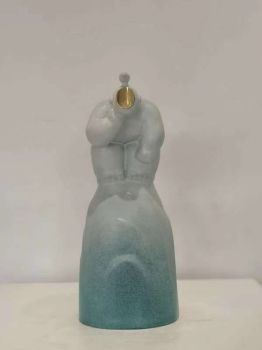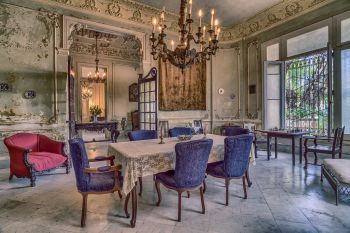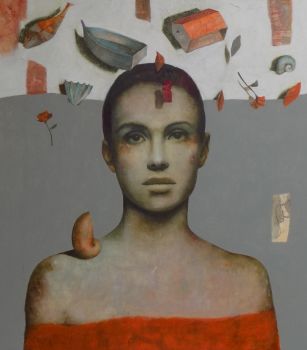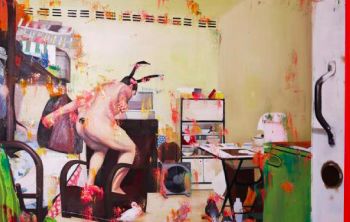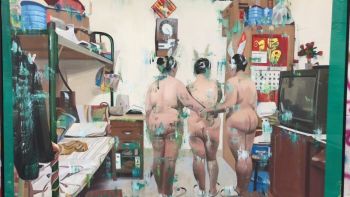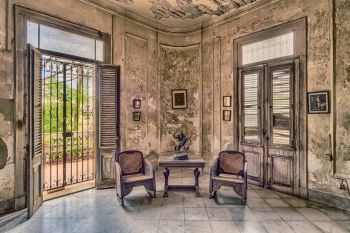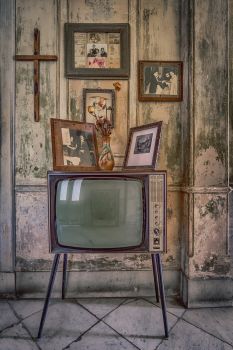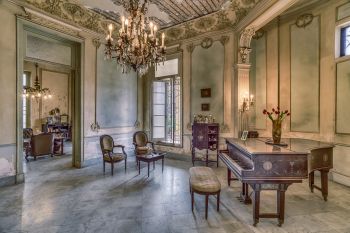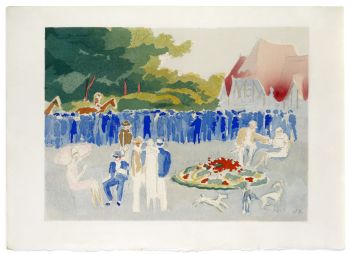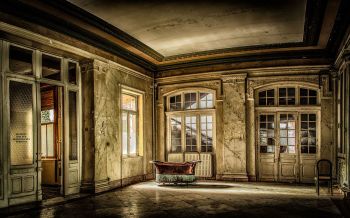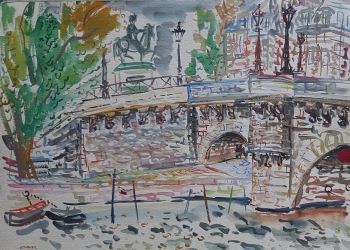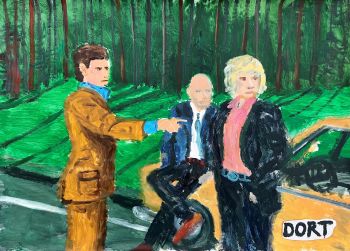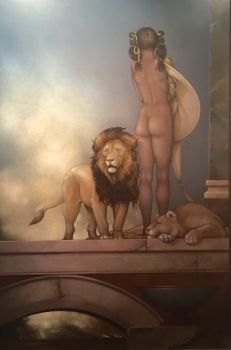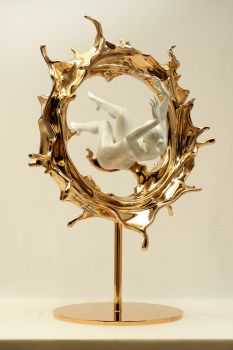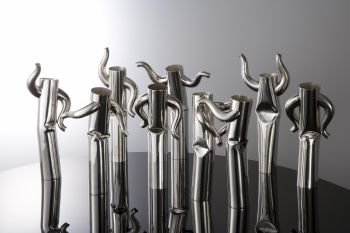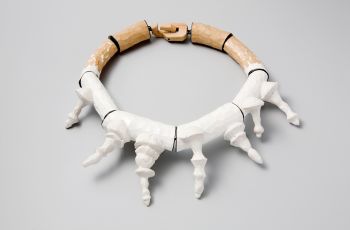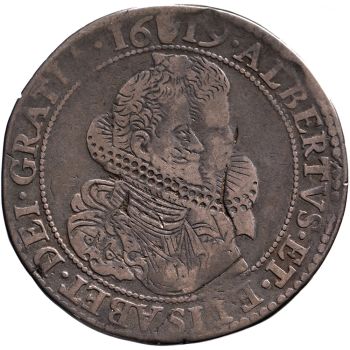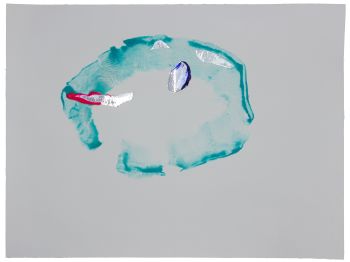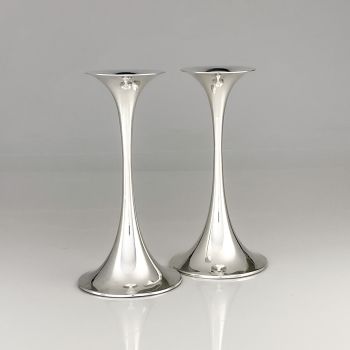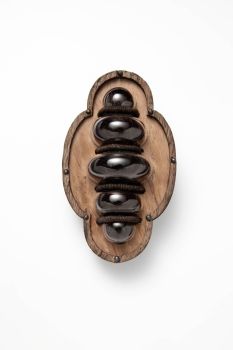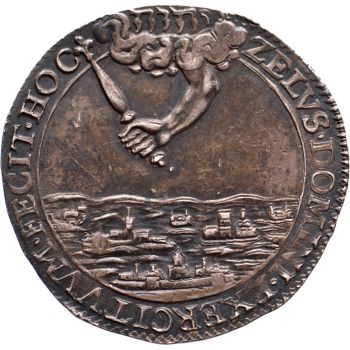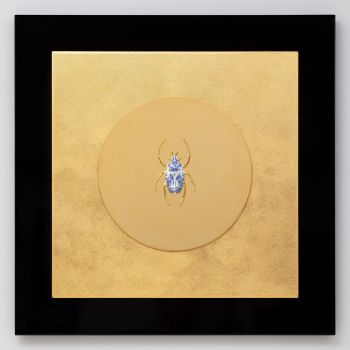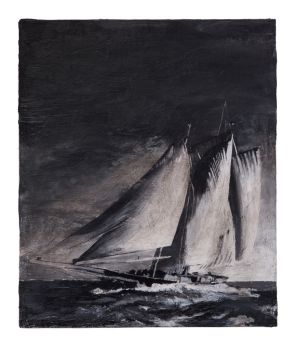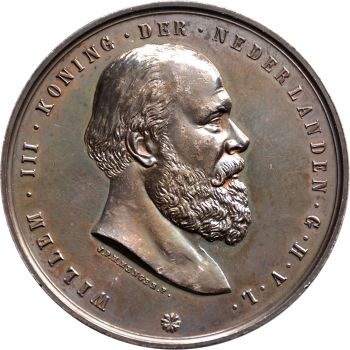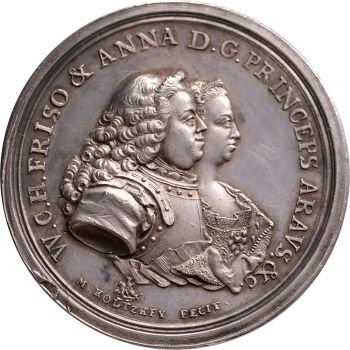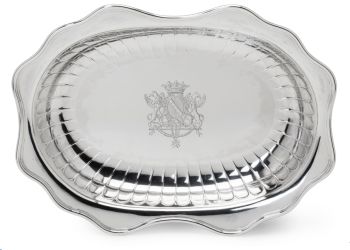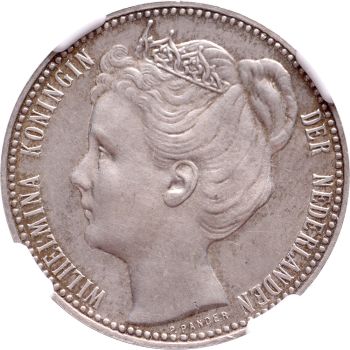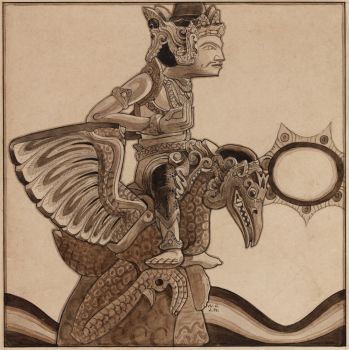An important Spanish colonial Barniz de pasto lacquer casket 1626 - 1650
Artista Desconocido
PlataBarniz
8 ⨯ 13 ⨯ 6 cm
Actualmente no disponible a través de Gallerease
Zebregs & Röell - Fine Art - Antiques
- Sobre la obra de arteAn important Spanish colonial Barniz de pasto lacquer casket with the Jesuit IHS monogram and silver mounts
Colombia, 1625-1650
L. 13.3 x W. 6.9 x H. 8.4 cm
The surface of the casket has been richly decorated in colourful barniz de pasto lacquer. The subject matter of the decoration involves, at the front; a boy riding a fantasy animal, a monkey with a human face and a bonnet playing the guitar, at the back; a predator catching a rabbit, another animal with a human face wearing a bonnet, at one side; a human figure coming out of a horn-shell, at the other side; a bird coming out of a horn-shell, the lid with two lions and all over, various birds among scrolling vines with exotic flowers and leaves. The inside of the lid is decorated with the monogram IHS, an abbreviation of the name of Jesus Christ, with a cross, and a heart pierced by three nails. This symbol was adopted by Ignatius of Loyola as general of the Jesuit Society of Jesus. Lock missing.
The indigenous lacquer traditions in Mexico and Colombia started because the demand in Spain and Spanish America for expensive Asian lacquerware exceeded the supply brought from Asia to Acapulco on the Manila galleons. Therefore, artisans in Mexico and Colombia began to apply their skills to the production of local lacquerware.
Barniz de Pasto is a lacquer-like technique made of plant extract, called mopa mopa, a translucent pale green natural sticky resin applied to wood. Mopa mopa is obtained from the garbanzo-bean-sized leaf buds of the mopa mopa tree (Elaegia pastoenis Mora), native to the tropical rain forests of southwest Colombia. The indigenous people of the Sibundoy Valley supplied the resin-covered leaf buds, pressed into blocks, to the lacquer artisans in Pasto. The long process of working the raw mopa mopa began with removing all impurities, then small amounts of the gummy resin were chewed or boiled in water to make it sufficiently elastic to stretch it into thin sheets by pulling in opposing directions by hands and teeth. Finally, the very thin sheets were applied with heath to a wooden object. The resulting layer provided an exceptionally durable, waterproof surface, impervious to most organic solvents and ready to be decorated.
The naturalist-explorers Jorge Juan and Antonio de Ulloa visited Pasto in 1740 and remarked that barniz de Pasto ‘rivalled the best Asian lacquers in its colours’ beauty, shine, and durability.’ - Sobre el artista
Puede suceder que un artista o creador sea desconocido.
Algunas obras no deben determinarse por quién está hecho o por (un grupo de) artesanos. Algunos ejemplos son estatuas de la Antigüedad, muebles, espejos o firmas que no son claras o legibles, pero también algunas obras no están firmadas en absoluto.
También puedes encontrar la siguiente descripción:
•"Atribuido a …." En su opinión, probablemente una obra del artista, al menos en parte.
•“Estudio de….” o “Taller de” En su opinión, una obra ejecutada en el estudio o taller del artista, posiblemente bajo su supervisión
•“Círculo de…” En su opinión, una obra del período del artista que muestra su influencia, estrechamente asociado con el artista pero no necesariamente su alumno.
•"Estilo de …." o “Seguidor de…”. En su opinión, una obra ejecutada al estilo del artista pero no necesariamente por un alumno; puede ser contemporáneo o casi contemporáneo
•"Manera de …." En su opinión una obra al estilo del artista pero de fecha posterior
•"Después …." En su opinión, una copia (de cualquier fecha) de una obra del artista
•“Firmado…”, “Fechado…” o “Inscrito” En su opinión, la obra ha sido firmada/fechada/inscrita por el artista. La adición de un signo de interrogación indica un elemento de duda.
•“Con firma…”, “Con fecha…”, “Con inscripción…” o “Lleva firma/fecha/inscripción” en su opinión la firma/fecha/inscripción ha sido añadida por alguien que no es el artista
¿Está interesado en comprar esta obra de arte?
Artwork details
Related artworks
Artista Desconocido
UNA COLECCIÓN DE CUATRO CAJAS BÍBLICAS DE MARFIL DE SRI LANKAN18th century
Precio a consultarZebregs & Röell - Fine Art - Antiques
Artista Desconocido
UITGEBREIDE FEESTDAGENIKOON MET PASSIECYCLUS19th century
Precio a consultarHeutink Ikonen
1 - 4 / 12Paulus Franciscus Kromjong
Flores frente a Arearea Aka (alegría) por Gauguin '20th century
Precio a consultarZebregs & Röell - Fine Art - Antiques
Thea G.F. Eschauzier
Retrato de una niña javanesa1931
Precio a consultarZebregs & Röell - Fine Art - Antiques
Artista Desconocido
UN INUSUAL PLATO DE PLATA CON LOBBED INDONESIOlate 17th
Precio a consultarZebregs & Röell - Fine Art - Antiques
Artista Desconocido
A Surinam-themed Amsterdam long-case clock1746 - 1756
Precio a consultarZebregs & Röell - Fine Art - Antiques
 curada por
curada porGallerease Magazine
Artista Desconocido
A silver spoon commemorating Juff’ Margareta van Hoorn1656 - 1694
Precio a consultarZebregs & Röell - Fine Art - Antiques
Artista Desconocido
Japanese transition-style lacquer coffer 1640 - 1650
Precio a consultarZebregs & Röell - Fine Art - Antiques
1 - 4 / 21Artista Desconocido
The bell of the VOC fortress in Jaffna, Sri Lanka1747
Precio a consultarZebregs & Röell - Fine Art - Antiques
 curada por
curada porDanny Bree
1 - 4 / 16- 1 - 4 / 24
Samuel Dejong
Anatomia Blue Heritage, Atlas Closed2017 - 2019
Precio a consultarVilla del Arte Galleries
Samuel Dejong
Anatomia Blue heritage II Goliath Beetle closed BGG2019
Precio a consultarVilla del Arte Galleries
1 - 4 / 24Artista Desconocido
A large Japanese Imari porcelain 'VOC Groningen' dish1800 - 1925
Precio a consultarZebregs & Röell - Fine Art - Antiques
Eduard Charlemont
‘Allegories of Africa and America’1872
Precio a consultarZebregs & Röell - Fine Art - Antiques
 curada por
curada porDanny Bree
1 - 4 / 12

